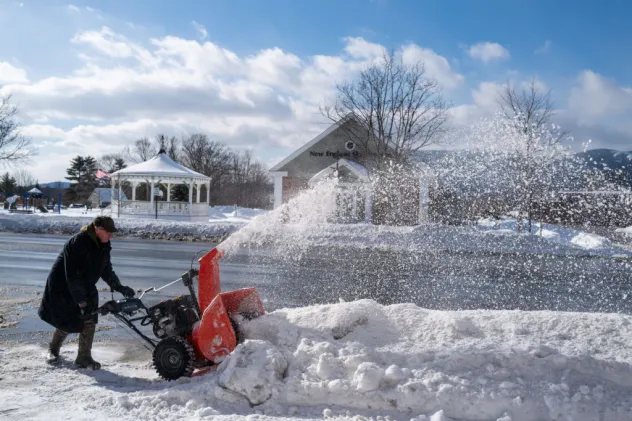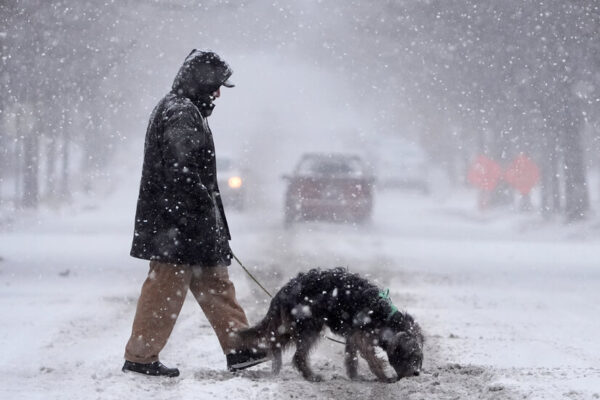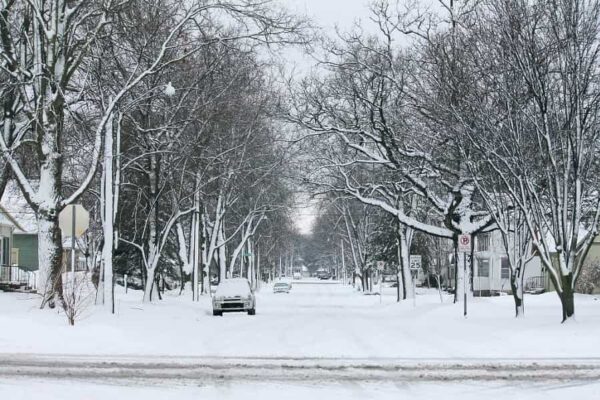As the leaves fall and the air turns crisp, my mind always drifts to winter. Growing up in Michigan, I remember bundling up for school, hoping for a snow day while my mom fretted about shoveling the driveway. Those memories make me curious about what’s in store for the US this winter. The 2024-25 season is shaping up to be a fascinating mix of mild temperatures, snowy bursts, and regional quirks, influenced by a weak La Niña and other atmospheric players. Let’s dive into the details of what meteorologists are predicting, region by region, and how you can prepare for the season ahead.
Why the 2024-25 Winter Forecast Matters
Understanding the winter forecast helps us plan everything from ski trips to heating budgets. A weak La Niña, expected to develop by late fall, will drive much of the weather, but it’s not the only factor. The polar vortex, ocean temperatures, and other oscillations will create a season of contrasts—mild for some, snowy for others, and always unpredictable.
The Role of La Niña
La Niña, characterized by cooler-than-average sea surface temperatures in the Pacific, is expected to be weak and short-lived this winter, emerging with a 59% chance by December and fading by spring. Unlike a strong La Niña, this weaker version allows other weather patterns to influence conditions, leading to more variability across the US.
Other Atmospheric Influences
The polar vortex could bring frigid air to the eastern US, especially in February, while warmer Gulf of Mexico waters may keep the South milder. The Arctic Oscillation and Pacific-North American pattern will also shape where cold air and storms hit hardest. These factors make the forecast a complex puzzle.
Regional Winter Outlook for 2024-25
Northeast and New England: Snowy Surprises Await
Expect more snow than last winter, especially in December, with lake-effect snow hitting Buffalo, NY, and other Great Lakes areas. January may bring milder air, but February could see polar vortex-driven cold snaps and nor’easters. Ski resorts like Stowe might enjoy a strong season, though coastal areas may see more rain than snow.
Snowfall Expectations
- Inland Areas: Heavy snow possible, especially in January and February.
- Coastal Regions: Mix of rain, sleet, and snow along the I-95 corridor.
- Ski Resorts: Good conditions early in the season, but icy slopes possible midwinter.
Midwest: Cold Snaps and Lake-Effect Snow
The Midwest, particularly Minnesota, Wisconsin, and Michigan, will see increased lake-effect snow in December, a stark contrast to last year’s quiet season. Cold air outbreaks are likely in January and February, making snow shovels essential. Resorts like Boyne Mountain could see decent snowpack.
Temperature and Precipitation
- Temperatures: Below average in the Upper Midwest, with brief mild spells.
- Precipitation: Above-average snowfall, especially near the Great Lakes.
- Challenges: Icy conditions due to melting and refreezing.
Pacific Northwest: A Wet and Cool Start
The Pacific Northwest, including Washington and Oregon, is forecast to have cooler-than-average temperatures and wetter conditions early in the season. Atmospheric rivers will bring heavy precipitation, ideal for resorts like Mt. Hood. However, snowfall may dip below average later due to a weak La Niña.
Ski Season Outlook
- Early Season: Strong snowpack from December storms.
- Midwinter: Possible drier spells, impacting lower-elevation resorts.
- Best Resorts: Look to Mt. Baker or Crystal Mountain for consistent snow.
Southwest and Southern Rockies: Dry and Warm
California, Nevada, and southern Colorado face a warmer, drier winter, challenging ski resorts like Mammoth Mountain. January may bring some relief with storms tracking south, but overall snowfall will be below average. Snowmaking will be crucial for resorts.
Key Considerations
- Snowfall: Limited, especially in February.
- Temperatures: Above average, reducing natural snowpack.
- Travel Tip: Opt for higher-elevation resorts like Snowbird in Utah.
Southeast and Gulf States: Mild and Dry
The Southeast, including Florida and Georgia, will see warmer-than-average temperatures and below-average precipitation. Snow is unlikely except in higher-elevation areas like the southern Appalachians. Plan outdoor activities in early March for milder weather.
Weather Impacts
- Temperatures: Consistently above average.
- Precipitation: Drier conditions, with occasional mixed precipitation in mountains.
- Planning: Ideal for outdoor events, but monitor for rare cold snaps.
Comparing Regional Forecasts
| Region | Temperature | Precipitation | Snowfall Outlook |
|---|---|---|---|
| Northeast | Milder, with cold snaps | Above average | Increased, especially inland |
| Midwest | Below average | Above average (snow) | Significant lake-effect snow |
| Pacific Northwest | Cooler than average | Wetter early, drier later | Strong early, weaker midwinter |
| Southwest | Above average | Below average | Limited, rely on snowmaking |
| Southeast | Above average | Below average | Rare, except in mountains |
Pros and Cons of the 2024-25 Winter Forecast
Pros
- Ski Opportunities: Northeast and Midwest resorts will benefit from increased snowfall, perfect for winter sports enthusiasts.
- Milder South: Warmer temperatures in the Southeast make outdoor activities more feasible.
- Early Snow in Northwest: Pacific Northwest skiers can expect a strong start to the season.
Cons
- Variable Conditions: Weak La Niña leads to unpredictable swings, complicating travel plans.
- Dry Southwest: Limited snowfall challenges ski resorts and water resources.
- Polar Vortex Risks: Late-season cold snaps could disrupt schedules in the East.
Preparing for the 2024-25 Winter
Last winter, I underestimated a sudden snowstorm and ended up stuck on a highway for hours—lesson learned! Here’s how you can get ready:
- Stock Up Early: Grab snow shovels, salt, and winter gear before the first storm hits. Check out Amazon for deals on winter essentials.
- Ski Trip Planning: Book early for resorts in the Northeast or Pacific Northwest. Websites like Ski.com offer tailored packages.
- Home Prep: Insulate windows and check heating systems to save on energy costs. Energy.gov has great tips for winterizing your home.
- Emergency Kit: Keep blankets, flashlights, and a portable charger handy for power outages.
People Also Ask (PAA)
Will it be a cold winter in the US for 2024-25?
While the season will be milder for much of the US, the Pacific Northwest and Upper Midwest will see cooler-than-average temperatures. February could bring cold snaps to the East due to the polar vortex.
Which states will get the most snow?
The Northeast (especially inland New England) and Midwest (near the Great Lakes) are expected to see the most snow, particularly in December and February. Resorts like Stowe and Boyne Mountain will likely benefit.
How will La Niña affect the winter?
A weak La Niña will shift the storm track northward, bringing wetter conditions to the Pacific Northwest and Great Lakes, while the South stays drier and warmer. Its weak nature means more variability.
Where can I find reliable weather updates?
Check NOAA’s Climate Prediction Center for seasonal outlooks and AccuWeather for detailed forecasts. Apps like OpenSnow are great for skiers.
FAQ: Your Winter Weather Questions Answered
Is the 2024-25 winter going to be worse than last year?
It depends on your region. The Northeast and Midwest will see more snow than last year’s record-warm winter, while the South stays mild. Expect more variability due to a weak La Niña.
What’s the best time to plan a ski trip?
December and early February are ideal for the Northeast and Pacific Northwest, where snowfall is expected to be heaviest. Book early to secure spots at top resorts.
How accurate are long-range winter forecasts?
Long-range forecasts, like those from NOAA, have inherent uncertainty but provide useful trends based on models like ENSO. Short-term forecasts (1-10 days) are more reliable for planning.
Can I plan an outdoor event in the Southeast?
Yes, the Southeast’s milder, drier winter makes early March a good choice for outdoor events, especially in areas like Jacksonville, FL. Monitor for rare cold snaps.
Where can I buy winter gear?
Retailers like REI and Amazon offer snow shovels, jackets, and other essentials. For ski gear, check Backcountry.
Tools and Resources for Winter Prep
- Weather Apps: OpenSnow and AccuWeather for real-time updates.
- Ski Planning: Ski.com for resort bookings and snow reports.
- Home Energy Savings: Energy.gov for insulation and heating tips.
- Emergency Supplies: Stock up on kits at Amazon or local hardware stores.
A Season of Twists and Turns
The 2024-25 winter will be a rollercoaster, with snowy highs in the Northeast and Midwest, wet starts in the Northwest, and milder conditions in the South. Whether you’re dreaming of powder days or dreading the shovel, preparation is key. My Michigan winters taught me to embrace the chaos—stock up, plan smart, and maybe keep some hot cocoa on hand for those chilly nights. Stay informed with NOAA and AccuWeather, and let’s make this winter one to remember, whether you’re hitting the slopes or cozying up at home.





